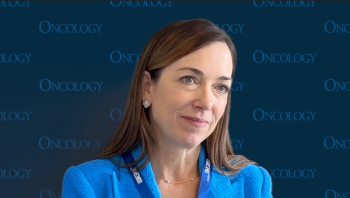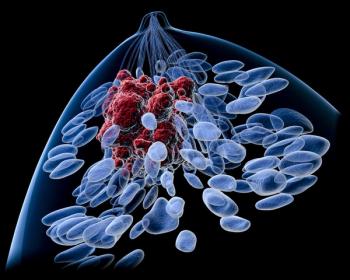
- ONCOLOGY Vol 24 No 13
- Volume 24
- Issue 13
Research Training in Breast Cancer for Low and Middle Income Countries
Anderson et al highlight the Breast Health Global Initiative for guideline development and discuss how developments in low and middle income countries have parallels in the delivery of health care to underserved populations in industrialized countries. Guidelines for appropriate breast cancer treatment must address early detection, accurate diagnosis, and the delivery of timely and appropriate treatment modalities.
In this issue of ONCOLOGY,
The global burden of disease is shifting from acute and infectious disease to chronic, noncommunicable diseases. In the year 2002, communicable infectious and parasitic diseases accounted for 19.1% of deaths worldwide, compared to the 58.7% of deaths that were attributable to noncommunicable diseases. After cardiovascular disease, cancer is the second leading cause of death and disability, and deaths from this disease are greater than those from AIDS, tuberculosis, and malaria combined.[1]
Breast cancer is the most frequent cancer among women, representing 23% of all female cancers, with 1.15 million new cases diagnosed in 2002. Breast cancer is also the most prevalent cancer; more than 4.4 million women now live with a recent breast cancer diagnosis (within 5 years).[2] Breast cancer in low and middle income countries tends to present at a later stage and thus there are fewer diagnostic and therapeutic options available to those afflicted.[3] Breast cancer is the most frequent cause of cancer death for women in developing areas.[4] Accurate global breast cancer statistics are difficult to obtain due to the lack of reliable cancer registries; however, even with this caveat, striking trends are emerging. The “Westernization” of the developing world is raising the risk of breast cancer through rapid changes in reproductive choices including delayed childbirth, lower parity and reduced breast feeding. Urbanization is also leading to sedentary lifestyles and dietary changes that may be contributing to the rise in breast cancer incidence.[5]
With the increasing rates of breast cancer in the developing world, the need for economically and culturally feasible treatments is rising as well. The Breast Health Global Initiative should be commended for its goal of creating evidence-based guidelines for lower and middle income countries. They have addressed this large challenge through the creation of Global Summits to formulate answers to these difficult questions. Theses summits address health care disparities [6], evidence based resource allocation [7], and guideline implementation [8], and define the optimal guidelines based on the resources available to deliver a basic, limited, enhanced, or maximal level of care. In June of 2010, the Breast Health Global Initiative convened in Chicago to discuss delivery of best practices for breast cancer care.
The significant and increasing impact of cancer globally, and especially in low and middle income countries has gained recognition and numerous international, academic, and non-governmental organizations have issued “calls to action” (WHO 2005).[9] In a recent article, Farmer et al describe additional crucial strategies, including the utilization of primary and secondary caregivers, use of off-patent drugs, and expanding financing and procurement. Many of the same techniques used to tackle the global burden of HIV and TB can be directed towards cancer care in resource-poor settings as well.[10]
We would like to point out that another neglected area that will be critical to address is the lack of clinical research training in low and middle income countries. An expert survey conducted by the Latin American and Caribbean Society of Medical Oncology and Breast Cancer Research Foundation found that 94% of surveyed experts thought that breast cancer clinical-epidemiologic research development was insufficient in their country. The primary reason cited was insufficient economic support (78.7%) and lack of available time (61.8%). Eighty-three percent of experts also considered the development of basic research insufficient in their country. Research was conducted in public (46.3%), private (16.8%), or public-private centers (22.1%) with only 1% of research conducted in universities or cooperative groups.[11]
This area represents a significant opportunity for academic institutions in high-income countries to partner with institutions in low and middle income countries to train oncologists and other clinicians in research methods to better prepare them for the conduct of research in their home countries and be more successful in garnering research funding from local and international resources. This can be accomplished by opening positions in research training programs to applicants from low and middle income countries and by fostering mentoring relationships with experienced faculty. Additionally, international institutional partnerships can be created to develop sustainable cancer research training programs. Including faculty in these training programs creates the framework for a sustainable model.
For example, at Washington University in St. Louis, a multidisciplinary team of public health faculty has received funding from the National Institutes of Health to collaborate with the Instituto Nacional de Cancerologia (National Cancer Institute, INCAN), the primary cancer center in Guatemala. This training program aims to increase the ability of Washington University to address international chronic disease control and to improve the INCAN’s research capacity by developing a sustainable cancer research training program through collaborations and mentorships. Another approach would be to open formal clinical and translational research degrees to foreign nationals. For example, Washington University’s Institute for Clinical and Translational Research opened its Masters degree in Clinical Investigation to international applicants for 2011. The degree offers a comprehensive approach, covering the full spectrum of necessary elements including research ethics, biostatistics, protocol design, epidemiology and grantsmanship. However, grant support for applicants to programs such as this, which exist at all Clinical and Translational Science Award supported institutions, is a critical ongoing need, and we suggest that programs such as the ASCO Foundation’s Long Term International Fellowship (LIFe) awards be greatly expanded. This is a significant investment opportunity for breast cancer charities to have a large and lasting impact on global breast health.
Ultimately, as Anderson’s article makes clear, breast health in low and middle income countries is an issue that is relevant to all of us. We have seen that even in wealthy nations, underserved populations have breast cancers that are diagnosed at a later stage and have worse outcomes. Establishing guidelines of care for low and middle income countries will be beneficial in all resource-poor settings. Furthermore, investing in training clinical researchers from low and middle income countries will likely yield a lasting impact that will drive the implementation of improvements in cancer care to the underserved globally.
Financial Disclosure:The authors have no significant financial interest or other relationship with the manufacturers of any products or providers of any service mentioned in this article.
References:
References
1. Mathers CD, Loncar D. Projections of global mortality and burden of disease from 2002 to 2030. PLoS Med. 2006; Nov 3(11):e442.
2. Parkin DM, Bray F, Ferlay J, et al. Global cancer statistics, 2002. Cancer J Clin. 2005 Mar-Apr;55(2):74-108.
3. Hisham AN, Yip CH. Spectrum of breast cancer in Malaysian women: overview. World J Surg. 2003 Aug;27(8):921-3.
4. Ferlay J, Shin HR, Bray F, et al. Estimates of worldwide burden of cancer in 2008: GLOBOCAN 2008. Int J Cancer. 2010 Jun 17.
5. Porter P. “Westernizing” women’s risks? Breast cancer in lower-income countries. N Engl J Med. 2008 Jan 17;358(3):213-6.
6. Anderson BO, Braun S, Carlson RW, et al. Overview of breast health care guidelines for countries with limited resources. Breast J. 2003 May-Jun;9 Suppl 2:S42-50.
7. Anderson BO, Shyyan R, Eniu A, et al. Breast cancer in limited-resource countries: an overview of the Breast Health Global Initiative 2005 guidelines. Breast J. 2006 Jan-Feb;12 Suppl 1:S3-15.
8. Anderson BO, Yip CH, Smith RA, et al. Guideline implementation for breast healthcare in low-income and middle-income countries: overview of the Breast Health Global Initiative Global Summit 2007. Cancer. 2008 Oct 15;113(8 Suppl):2221-43
9. International Union Against Cancer. UICC World Cancer Declaration: a call to action from the global cancer community. 2008. [updated 2008; cited 2010 Oct 17] . Available from : http://uicc.agenceinovae.com/sites/uicc.agenceinovae.com/files/wcden09low.pdf.
10. Farmer P, Frenk J, Knaul FM, et al. Expansion of cancer care and control in countries of low and middle income: a call to action. Lancet. 2010 Oct 2;376(9747):1186-93. Epub 2010 Aug 13.
11. Cazap E, Buzaid AC, Garbino C, et al; Latin American and Caribbean Society of Medical Oncology. Breast cancer in Latin America: results of the Latin American and Caribbean Society of Medical Oncology/Breast Cancer Research Foundation expert survey. Cancer. 2008 Oct 15;113(8 Suppl):2359-65.
Articles in this issue
almost 15 years ago
Radiation for Diffuse Large B-Cell Lymphoma: More Questions Than Answersalmost 15 years ago
The Breast Health Global Initiative: Why It Matters to All of Usalmost 15 years ago
Why My Neighbor’s Health Is Important to Mealmost 15 years ago
Integrative Oncology: Oleander (Nerium oleander)almost 15 years ago
The Tipping Point: It’s Time for Oncologists to Prepare for ChangeNewsletter
Stay up to date on recent advances in the multidisciplinary approach to cancer.



















































































